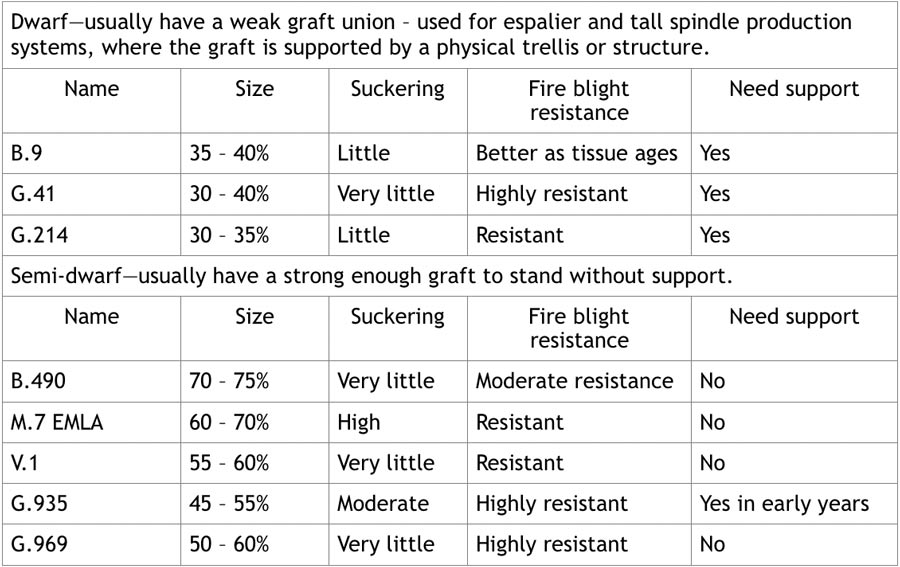Why the scion and rootstock are important aspects of grafted apple trees
Published at | Updated at
Apples are the most common tree fruit grown in eastern Idaho. The trees can live for several decades, but it is more common to see them decline in production after about 20 – 40 years. Still, that is a significant investment.
After selecting the proper site for your apple tree, there are two very important considerations when you purchase your new investment — the scion and the rootstock. All apple trees that are purchased at the garden center or nursery have been grafted. The part above the graft is called the scion and below the graft is the rootstock.
There are several reasons apple trees are grafted, but here are the main two reasons:
The scion provides consistent fruit quality. The seeds collected from apples will not produce fruit just like the one eaten. Most pollinator trees used by orchards are crabapples—trees grown from those seeds will likely produce small, hard fruit.
The rootstock provides certain characteristics that help the scion fit specific growing conditions. This may include:
- dwarfing so trees are easier to manage or fit in smaller spaces
- disease resistance, such as replant disease or fire blight
- hardiness improvement
- resistance to pests, such as the wooly apple aphid
Which scion and which rootstocks are best? It depends.
Scion
The scion should be selected based on the desired eating experience and the harvest window. Eating experience is based on personal preferences, but apple uses can fall into one or more of the following categories:
- Fresh
- Salads
- Baking
- Sauces
- Pies
Some cultivars require too long of a season to be practical in eastern Idaho — Granny Smith, Pink Lady and Fuji. Since different regions will have different harvest windows, the easiest way to determine which cultivars will produce a consistent harvest is to find a mid-season standard such as Red McIntosh.
Fremont, Teton, Caribou and Bear Lake Counties (and other high-elevation areas) should consider apples that will ripen no later than the Red McIntosh. Madison, Jefferson, Franklin and Bonneville Counties can extend that selection to cultivars that ripen a week or two after Red McIntosh. Bingham, Bannock and perhaps Power Counties could extend another week or so later.
The easiest way to determine cultivar harvest windows is to search online for “apple season harvest chart”. The dates may not match our region, but the relative timing should be pretty close.
Rootstock
Next to size, apple rootstocks in eastern Idaho should be selected for hardiness, fire blight resistance and few suckers.
Standard, or seedling, apples typically reach about 30 feet tall. A common semi-dwarf rootstock is the M.7 EMLA, about 50 – 60% of standard, and has good fire blight resistance, but it suckers like crazy. A common dwarf rootstock, M.26, doesn’t sucker much, but is extremely susceptible to fire blight.
It is worth the effort if you can get your local nursery to bring in apple trees that are on the rootstock you desire. If they don’t want to, you can shop online. Since standard or seedling trees are not practical for fruit production, commercially or at home, the following table lists dwarf and semi-dwarf rootstocks that are hardy and widely available.

Bonneville County Extension will hold a grafting lab on April 9 at 10 a.m. at 1542 East 73rd South. The cost will be $5 to pay for the rootstock (G.935). Pre-registration by April 8 is required. To register call (208) 529-1390.

In the Garden is sponsored by ProPeat, which is dedicated to delivering solutions for any of your professional fertilization needs. Whether you need to reduce the harm to soils and the environment, or you're interested in the latest nitrogen, carbon and biochemical technologies, ProPeat is the perfect fit.


